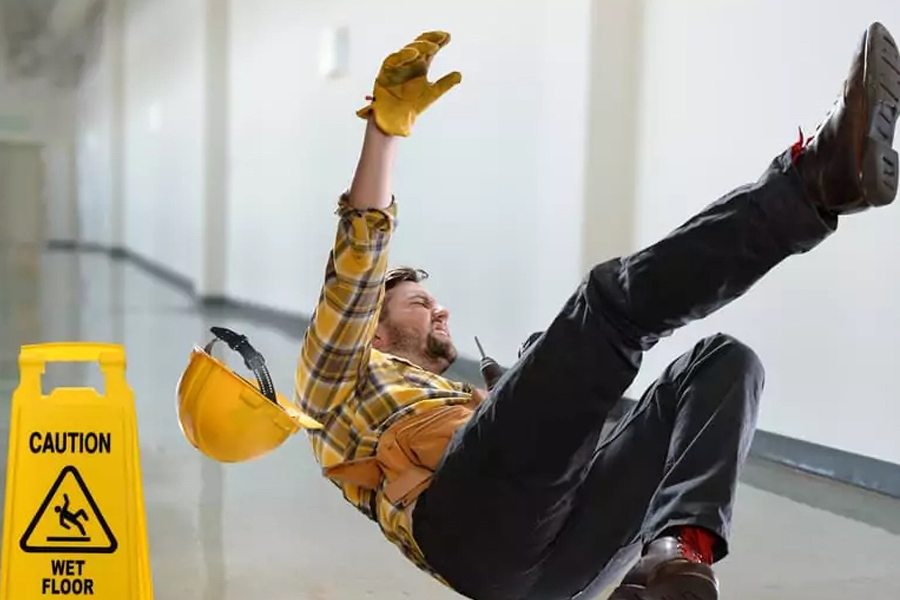Now Reading: What a Personal Injury Lawyer in Fremont, CA Can Do After a Slip and Fall
-
01
What a Personal Injury Lawyer in Fremont, CA Can Do After a Slip and Fall
What a Personal Injury Lawyer in Fremont, CA Can Do After a Slip and Fall

A quick, human take on your rights after a slip and fall
A slip and fall can feel like a scene cut from a bad movie: sudden, disorienting, and expensive. In Fremont, California, three practical rights matter most after a tumble—seek medical care, document what happened, and pursue compensation if negligence played a role. Property owners owe a duty to keep their premises reasonably safe, and when that duty is breached, a lawyer helps turn scattered details into a coherent claim.
This section sets the stage: going to the doctor isn’t optional, preserving evidence matters more than pride, and acting promptly keeps your legal options alive. Think of these first steps as triage for both health and the case you might later bring.
Types of compensation you may be entitled to
Claims in California typically break into two camps: economic and non-economic damages. Economic damages cover tangible losses like medical bills, rehabilitation costs, and lost wages. Non-economic damages compensate for pain, suffering, emotional distress, and any hit to your quality of life.
In serious cases, damages can also include future medical needs, home modifications, and lost earning capacity. Property damage—ripped clothing, broken glasses, a ruined phone—can be added to the tally. A lawyer’s job is to make invisible costs visible and to translate the long-term effects of an injury into concrete numbers.
How to gather evidence and build a persuasive record
Your case lives and dies on documentation. Photograph the scene—every puddle, crack, and sign (or absence of one). Preserve surveillance footage if it exists and collect witness contact details before they vanish or forget. Keep every medical bill, prescription receipt, and therapy note in one folder.
A well-kept journal becomes a narrative that insurance adjusters can’t ignore: note symptom onset, pain levels, doctor visits, and how the injury affects daily tasks. Attorneys know where to look for timestamps, maintenance logs, and building records that corroborate your account.
Proving property owner negligence: the essential playbook
Negligence is not a mystery when you collect the right evidence. Photographs, repair logs, and repeated incident reports show patterns; a single snapshot of a hazard can be persuasive, but a maintenance history that reveals neglect tells a story. Witnesses who say they saw the hazard—or that it wasn’t marked—give the claim gravity.
Your lawyer will map causation: link the hazardous condition to the fall and the fall to the injuries. When maintenance schedules, cleaning logs, or contractor invoices reveal gaps, that timeline becomes a central tool to demonstrate the owner failed in their duty.
Documenting unsafe conditions—what to capture and why
Be methodical. Capture the defect from multiple angles: uneven tiles, missing handrails, dim lighting, pooled liquids, torn carpeting, cracked stairs—each detail matters. Record environmental context too: time of day, weather, and whether warning signs were present (or absent).
If the property is quick to fix hazards, the early photos and any available surveillance are crucial. Your attorney will help secure evidence and preserve it against later alterations, so the condition you described isn’t erased from the record.
Investigating maintenance records like an investigator
Maintenance records can be the smoking gun. Lawyers comb through inspection schedules, work orders, cleaning logs, and contractor invoices to detect delays, omissions, or patterns of neglect. These documents can show whether the property owner followed standard practices or let avoidable hazards linger.
A careful review often reveals not just a single mistake but systemic issues—missed inspections, incomplete repairs, or inconsistent cleaning—that strengthen the case and support a higher valuation of damages.
Gathering witness statements that hold up
Eyewitnesses can turn a slippery anecdote into corroborated fact. Attorneys prioritize getting statements while memory is fresh and documenting names, contact information, and the specifics of what each witness observed. They also check consistency between accounts and look for any potential bias.
Credibility matters, and professionally collected witness statements—signed, dated, and specific—become powerful evidence in both negotiations and trial.
Handling insurance companies so you don’t say the wrong thing
Insurance adjusters are trained to limit payouts. A lawyer communicates on your behalf, shielding you from questions that could be twisted into a reason to deny or reduce a claim. Attorneys compile the evidence, calculate the full value of the claim, and negotiate from a position of informed strength.
That representation gives you space to recover while professionals focus on maximizing compensation and countering tactics like delay, lowball offers, or claims of comparative fault.
Meeting deadlines and navigating filing rules
California imposes time limits and procedural steps that can derail a claim if ignored. A lawyer keeps the statute of limitations in sight—filing critical documents, meeting court deadlines, and, for claims against government entities, observing the much shorter notice periods required.
Missing a deadline can cost you the right to pursue compensation—lawyers make sure that doesn’t happen.
Calculating the full value of your claim: medical costs and lost wages
A complete valuation includes emergency care, diagnostics, surgeries, medication, physical therapy, and projected future treatments. Lost wages aren’t just days missed; they include reduced hours, lost promotions, diminished earning potential, and the monetary fallout of benefits lost or altered.
Attorneys often consult medical and economic experts to produce thorough projections, ensuring settlement talks reflect the realistic long-term impact of the injury.
Strategy: settlement, litigation, and knowing when to litigate
A successful case combines evidence, expert analysis, and a sound legal strategy. Your lawyer will decide whether to push for settlement or prepare for trial based on case strength, jury appeal, and practical considerations like time and expense. Skilled negotiators use the threat of litigation as leverage, but they also know when a trial is truly the best path.
Throughout, your lawyer keeps you informed so decisions about offers or trial moves are yours to make, with clear advice layered on top of the facts.
FAQ
How long will my slip and fall case typically take to resolve?
Cases commonly resolve within six to eighteen months, though complexity and the need for litigation can lengthen that timeline.
Can I still file a claim if I was partially at fault?
Yes; California uses comparative fault rules, so your compensation may be reduced according to your percentage of fault.
What types of damages can I recover after a slip and fall?
You may recover economic damages like medical bills and lost wages, as well as non-economic damages for pain, suffering, and diminished quality of life.
Should I get medical attention even if I feel okay at first?
Yes—seeking immediate medical care both protects your health and strengthens any future claim by creating a clear medical record.
Do I have to give a recorded statement to the property owner’s insurer?
It’s generally advisable to avoid recorded statements before consulting an attorney, since insurers may use them to undermine your claim.
What happens if the property owner fixes the hazard right after my fall?
Prompt repairs make early photos, witness statements, and preserved surveillance footage even more important, because they’re the best way to capture the original unsafe condition.





















